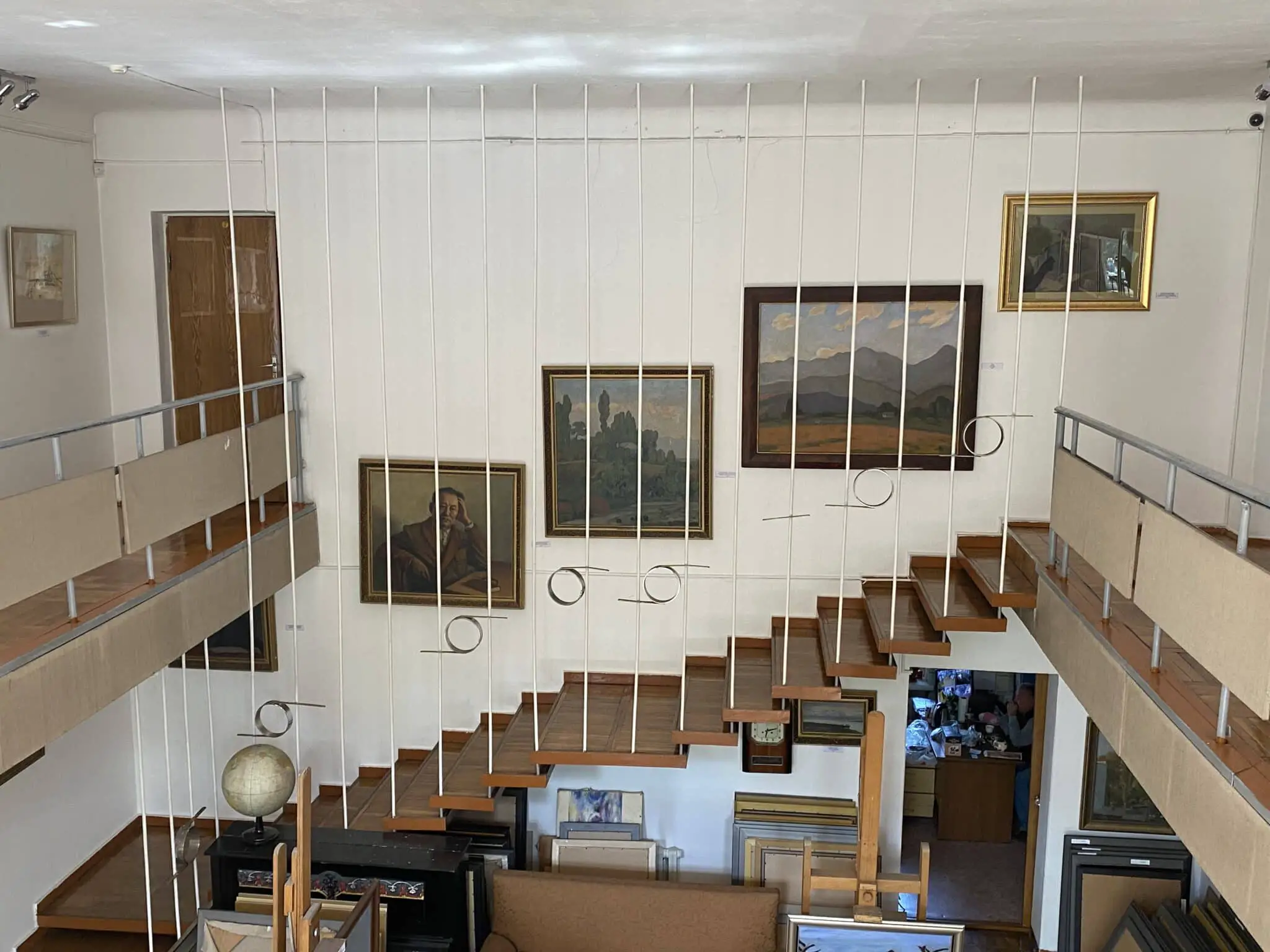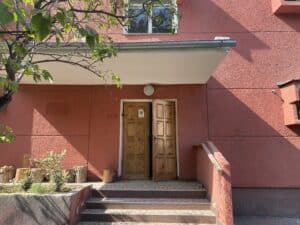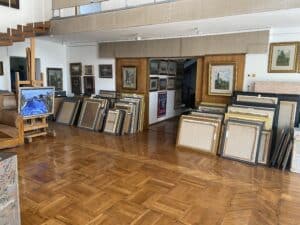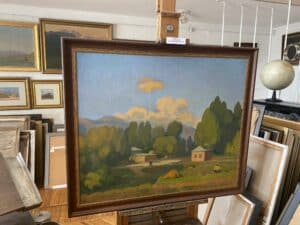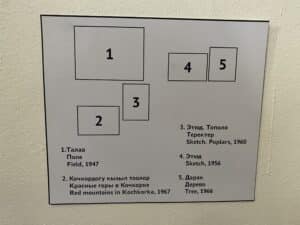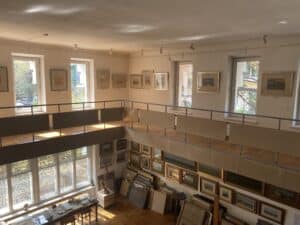The Gapar Aitiev Memorial Museum Studio is housed in the small, two story space which were once his working studios. Aitiev, who was born in 1912, was a school teacher before becoming one of the first classically trained ethnic Kyrgyz artists. Today, he is known for his sensitive and loving introduction of Krygyz faces, traditions, and landscapes into the western tradition. After his death in 1984, his studio was turned into a museum and today shows many of his paintings and sketches in a historical space.
The Gapar Aitiev Memorial Museum Studio is centrally located a few blocks from the Ala-Too square in Bishkek. Not to be confused with the Gapar Aitiev Kyrgyz National Museum of Fine Arts, which is named in his honor, the small Memorial Museum Studio is only identifiable from the street by a small metal memorial sign on the gate leading to the gallery’s modest courtyard. The studio is almost as chaotic and personal as the National Museum is ordered and formal. In fact, the light red exterior of the studio building makes it seem like any other residential building in the surrounding area.
The museum today is run by Aitiev’s son, Satar Aitiev, who manages the museum and pursues artistic endeavors himself. He greets you as you walk in. Although he only speaks Russian and Kyrgyz, he is an incredibly hospitable person and delighted to welcome visitors from the United States to his father’s workshop. While some language ability would be good when visiting, politely speaking in English using a translator app will suffice to indicate your desire to look around. After a few minutes of talking, Satar invited me to look around and to find him if I had any questions.
As you enter, to your immediate left is one of Gapar’s original workspaces with a desk and chair. This first room presents a limited biography of the artist with photos, newspaper clippings, and other documents describing his major life achievements chronologically arranged along the wall. While the documents are only in Kyrgyz and Russian, one can achieve a sense of Gapar’s life accomplishments through the photos alone.
Straight ahead from the entrance you will walk into the main room, a larger open space, which is set up to maximize the amount of art that can be put onto the walls. Nearly every wall is filled with framed works and what seems to be hundreds of pieces leaning up against one another along the lower parts of the walls on all four sides of the room.
Making your way through the museum, the works are identified with either a small individual plaque, or more commonly, a laminated sheet strategically located near identifiable collections or sections of wall with titles and dates of the works listed in a numerical order. These laminated sheets are sometimes pinned to the wall and other times simply placed leaning on a chair nearby. Titles of the works and dates are listed in Kyrgyz, Russian, and English. Most of the art is dated from the 1940’s to the 1970’s, when Aitiev was most active.
Making your way up the stairs from the central room of the gallery, you will find a section immediately overlooking the center room. This area is focused mainly on drawings and sketches. Just beyond this portion, the rest of the second floor contains two separate rooms filled with more paintings. After making your way through the two rooms, a staircase leading back down to the entrance hall can be found. Art covers every wall in the gallery, including the walls along the staircases. Making your way down the concrete stairs from the second floor to the entrance hall will bring you full circle at the Gapar Aitiev Memorial Museum Studio.
Gapar Aitiev Memorial Museum is small in size and does not offer English language audio guides or tours. You might check with Bishkek Walks, a specialty local firm that has been known to cover this museum in the past with English-language tours. You might get lucky and they might have a tour you can join. They can arrange private tours as well, although these would be out of the price range of most students.
The Memorial Museum Studio is a great place to visit to find a unique sliver of Kyrgyz culture. The Memorial Museum had a feeling of authenticity as if someone is still using it as a workspace in order to keep the memory of Gapar alive and well, perhaps as he would have wanted it to be. The narratives that prevail in the art along each wall are tranquility and peace through the beautiful picturing of the Kyrgyz landscapes.
Open Tuesday through Friday 10AM-5PM, the memorial museum is open free-of-charge to the public.
You Might Also Like
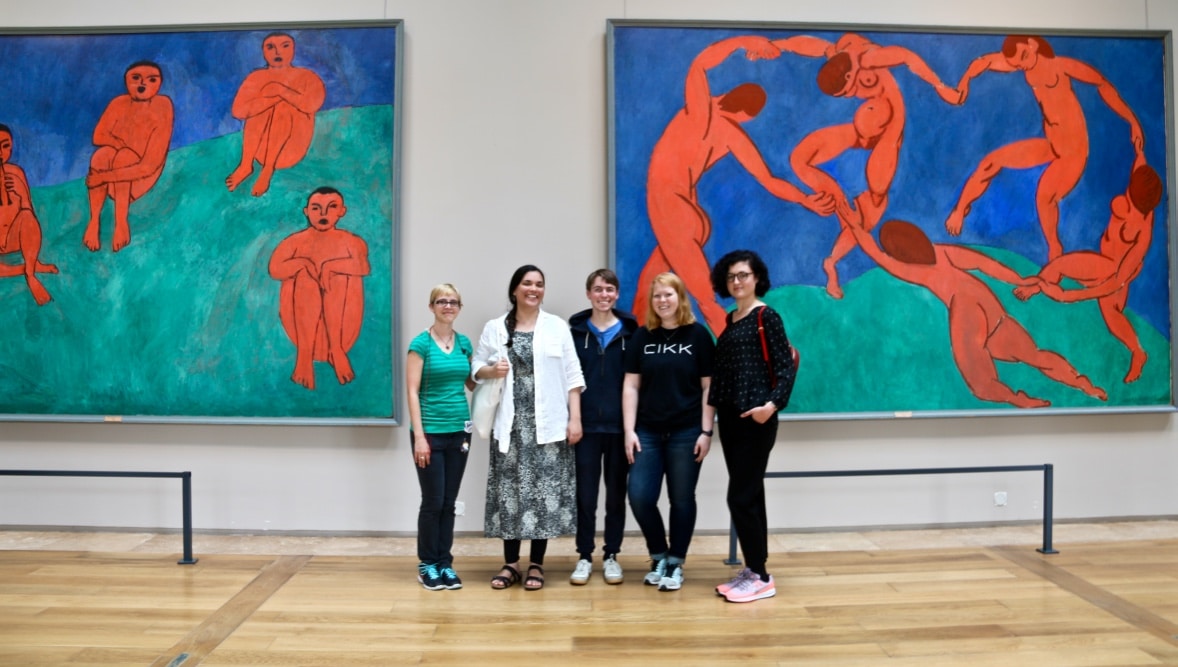
Museums as Self-Care
In 2018, doctors in Montreal began prescribing visits to the Montreal Museum of Fine Arts (MMFA) for patients experiencing depression, anxiety, and other health issues. This innovative approach to mental health treatment was launched under the initiative of the MMFA in collaboration with Médecins francophones du Canada (MFdC). The program allows physicians to provide patients […]
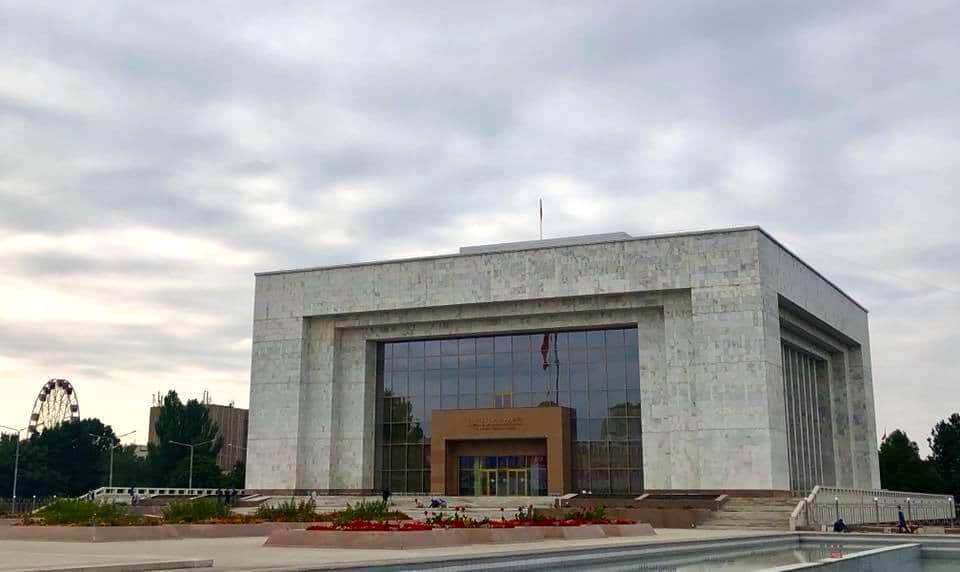
Guide to Bishkek’s Top Museums for Students
The Kyrgyz were largely a nomadic civilization up until the 20th century. The city of Bishkek has a number of museums documenting this fascinating history as well as the development of the arts and sciences in Kyrgyzstan. These museums were mostly established during (and today are often unchanged from) Soviet times, including a number of […]
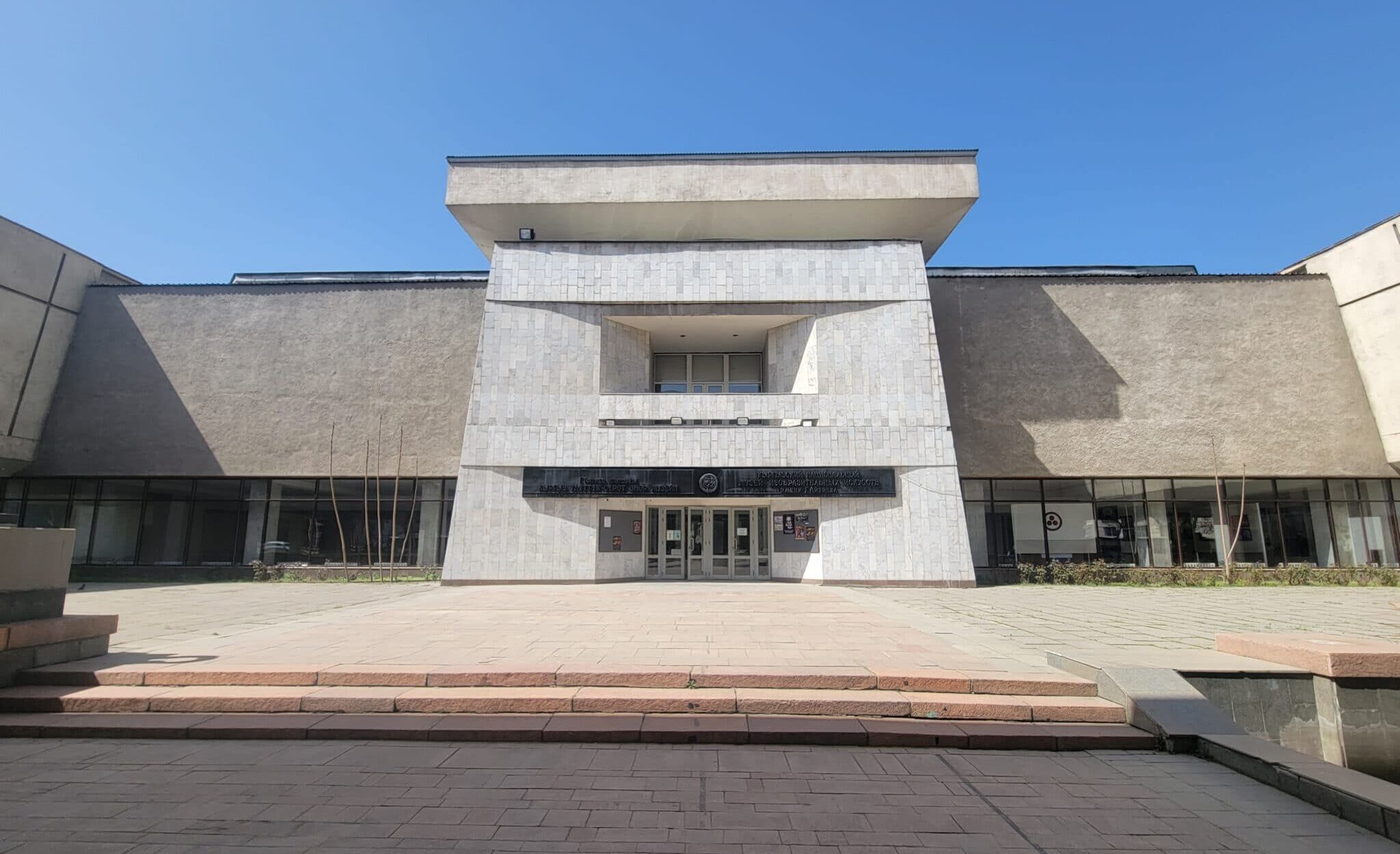
The Kyrgyz National Museum of Fine Arts in Bishkek
The Kyrgyz National Museum of Fine Arts in Bishkek showcases native art forms as well as painting, sculpture, and other works, highlighting those created by Kyrgyz artists. The museum is centrally located and is perfect for a day trip with an abundance of restaurants and cafes nearby. The article below will tell the history of […]
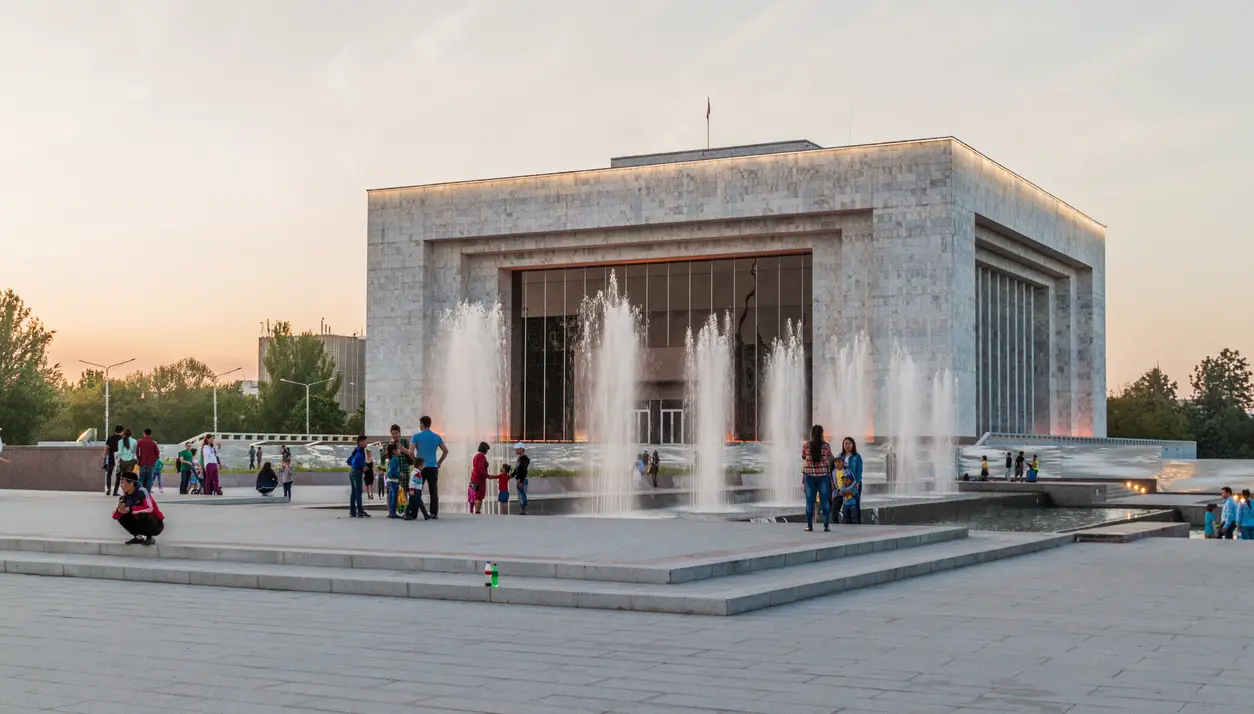
The National Historical Museum of the Kyrgyz Republic
The National Historical Museum of the Kyrgyz Republic is a great place to get started when visiting Kyrgyzstan. The museum’s extensive collection of more than 90,000 exhibits includes artifacts from Kyrgyzstan’s prehistory, from its ancient Silk Road era, Soviet-era history, and modern state. Culture exhibits focus on Kyrgyz nomadic culture, traditional handicrafts, and the musical […]

The Evolution of Art and Painting in Central Asia
While Central Asia has a long, rich history, the modern nations of the region are a direct result of 20th century colonization. Prior to Soviet interference, the many ethnic groups and distinct societies of the region were loosely grouped under the geographic term of Turkestan. Under Soviet control, the region was divided into the Turkmen […]


